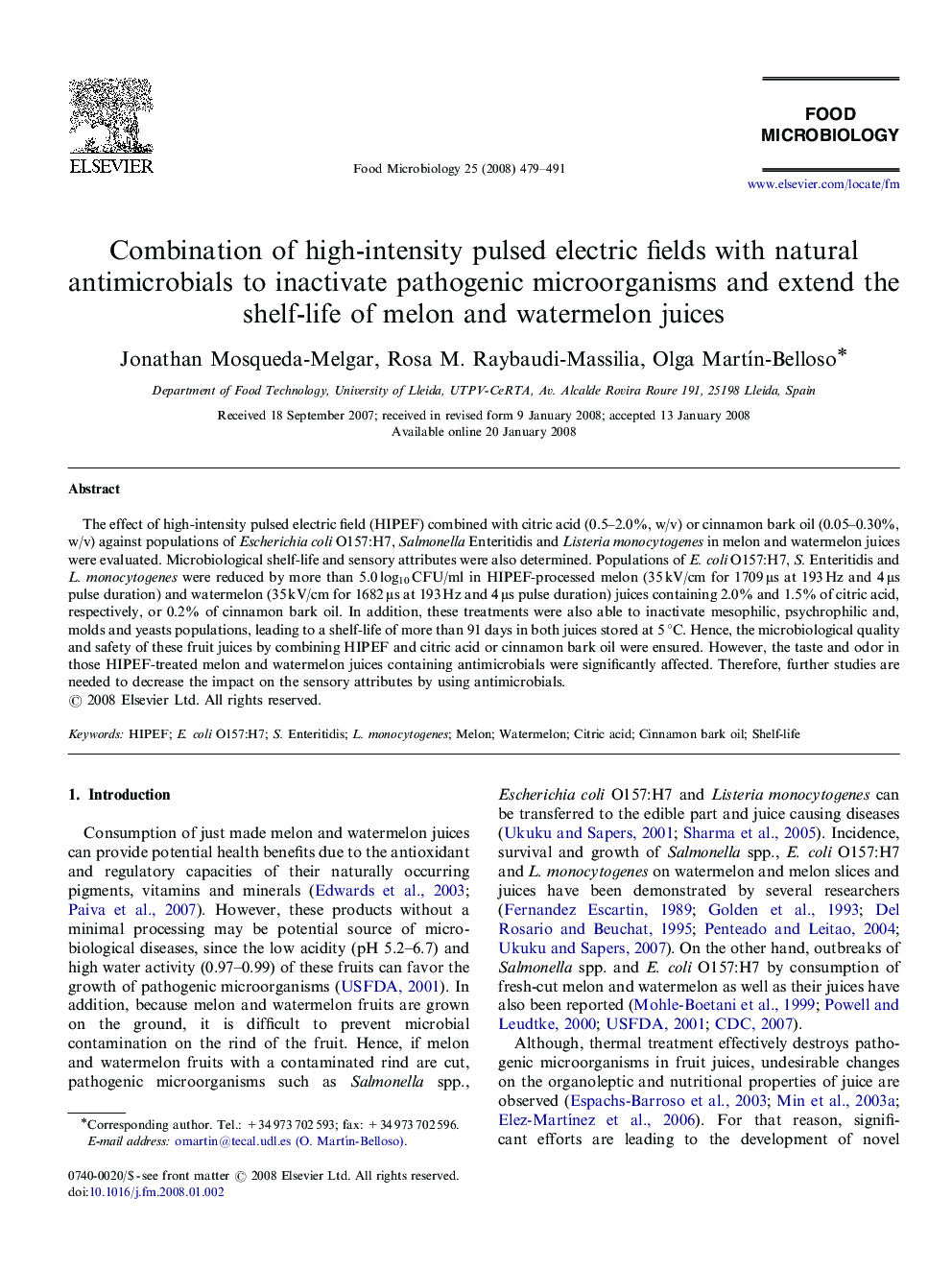| Article ID | Journal | Published Year | Pages | File Type |
|---|---|---|---|---|
| 4363723 | Food Microbiology | 2008 | 13 Pages |
The effect of high-intensity pulsed electric field (HIPEF) combined with citric acid (0.5–2.0%, w/v) or cinnamon bark oil (0.05–0.30%, w/v) against populations of Escherichia coli O157:H7, Salmonella Enteritidis and Listeria monocytogenes in melon and watermelon juices were evaluated. Microbiological shelf-life and sensory attributes were also determined. Populations of E. coli O157:H7, S. Enteritidis and L. monocytogenes were reduced by more than 5.0 log10 CFU/ml in HIPEF-processed melon (35 kV/cm for 1709 μs at 193 Hz and 4 μs pulse duration) and watermelon (35 kV/cm for 1682 μs at 193 Hz and 4 μs pulse duration) juices containing 2.0% and 1.5% of citric acid, respectively, or 0.2% of cinnamon bark oil. In addition, these treatments were also able to inactivate mesophilic, psychrophilic and, molds and yeasts populations, leading to a shelf-life of more than 91 days in both juices stored at 5 °C. Hence, the microbiological quality and safety of these fruit juices by combining HIPEF and citric acid or cinnamon bark oil were ensured. However, the taste and odor in those HIPEF-treated melon and watermelon juices containing antimicrobials were significantly affected. Therefore, further studies are needed to decrease the impact on the sensory attributes by using antimicrobials.
